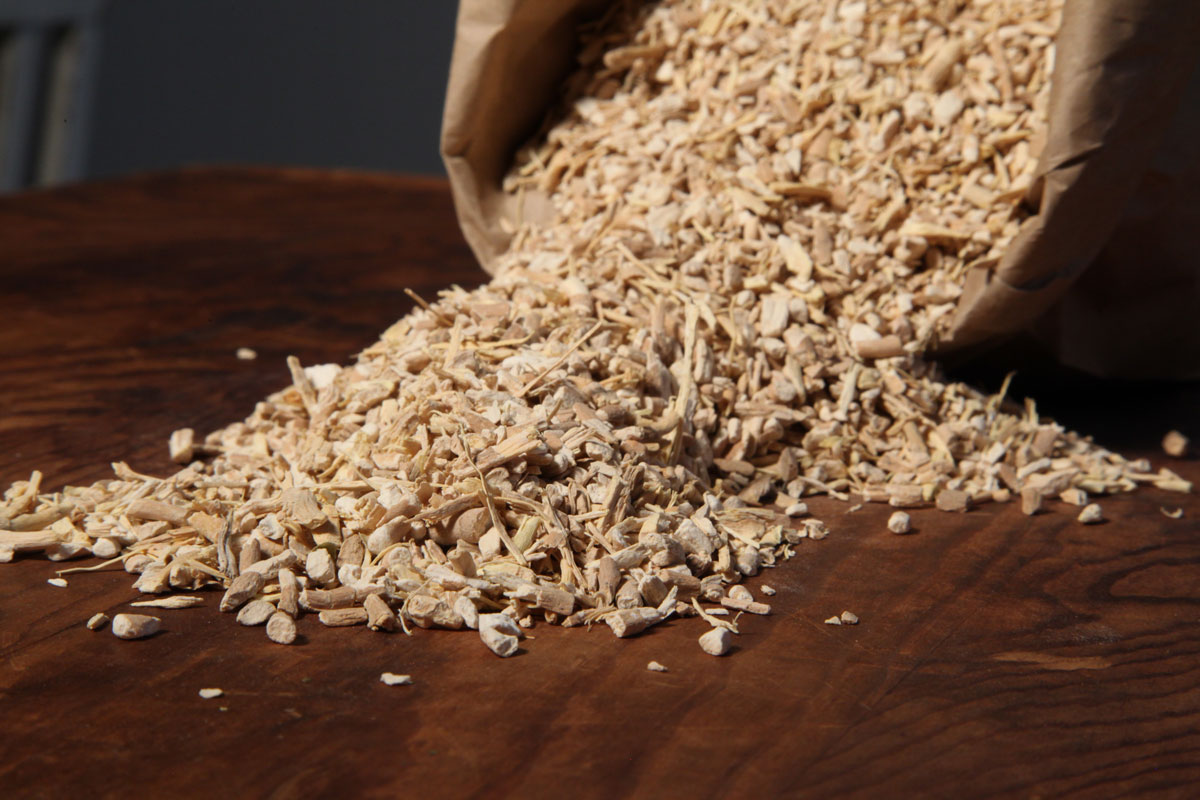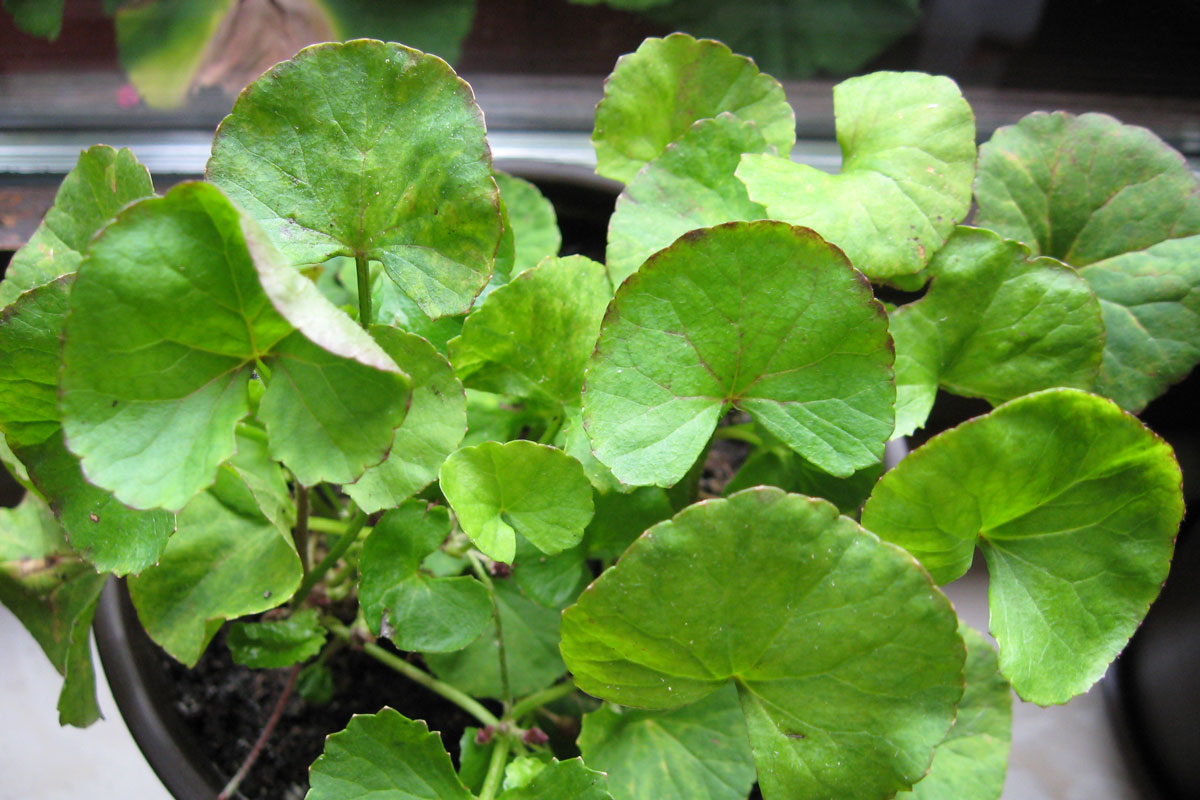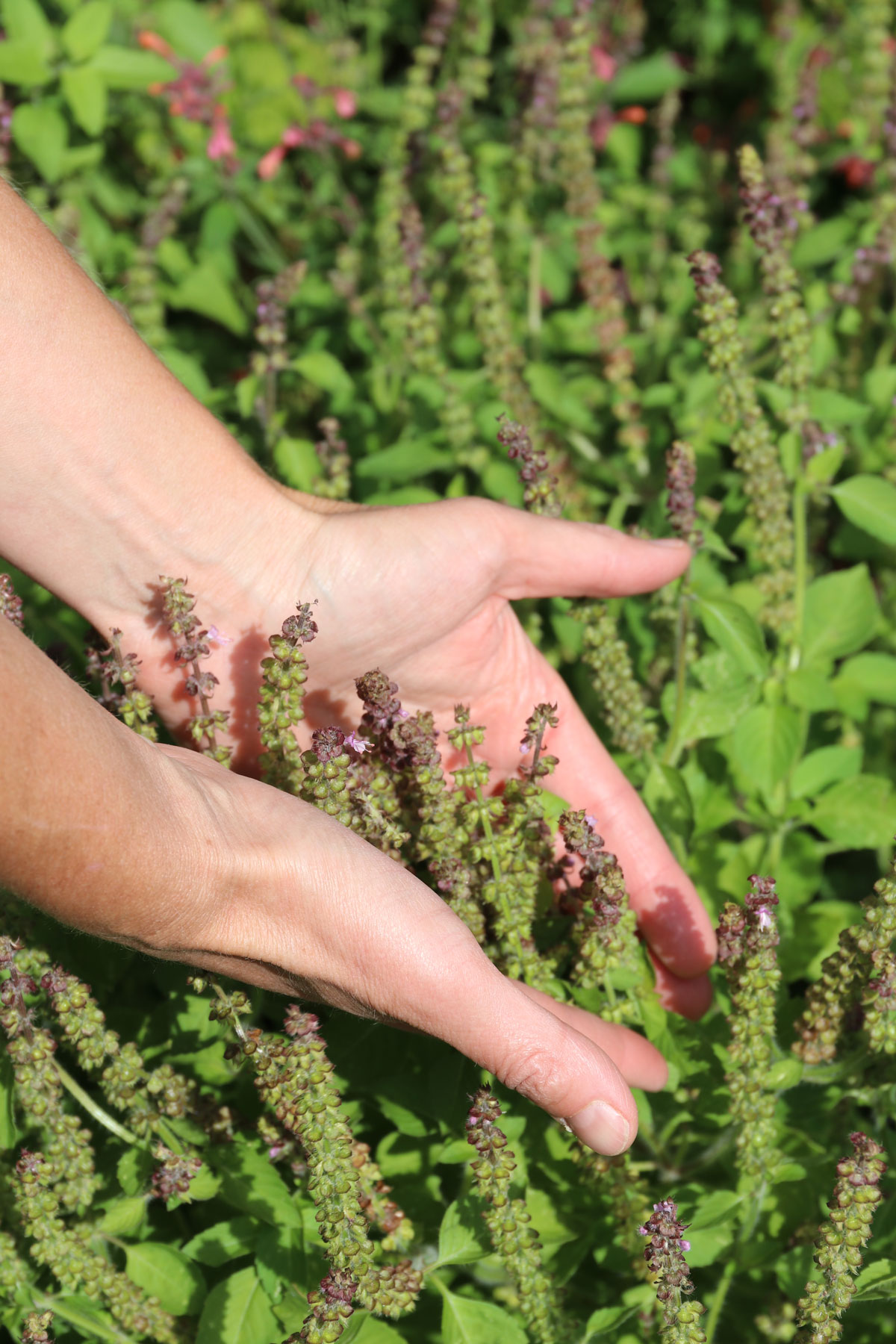
How to Use Herbs to Rebuild from Burnout
Long-term stress takes a huge toll on one’s body and mind. Sometimes that stress can chip away at vital reserves and one’s sense of wellbeing, ultimately leading to a state of burnout. In digging into the exact meaning and causes for burnout, it is clear that its defining borders can be quite nebulous. Unlike depression, burnout is not clinically defined or diagnosed. However, if you have ever experienced burnout, you know how real it is. Just because burnout is not a diagnosable condition does not mean that it isn’t palpable and that it cannot have profoundly negative effects on your physical and emotional wellbeing. In this article, we will briefly explore how to recognize burnout and even more importantly, ways in which you can call upon herbs to rebuild from burnout.
How to Recognize Burnout

Regardless of whether you are a student, work full time or part time, or manage your family’s home life, burnout can happen to anyone. We often think of burnout as relating to one’s job or career, but it is possible to experience burnout in a relationship, a creative or athletic pursuit, or one’s family duties. Not surprisingly, caregivers tend to be particularly susceptible to burnout, as the emotional demands of caregiving are high and oftentimes caregivers tend to be generous at the expense of sacrificing their own needs (Institute for Quality and Efficiency in Health Care, 2012). The Mayo Clinic (2018) lists the following as potential signs of job burnout:
- feeling irritable and impatient
- trouble sleeping
- feeling a lack of accomplishment or satisfaction with one’s accomplishments
- trouble concentrating
- lack of motivation
- using food, drugs, or alcohol to feel better or numb one’s emotions
- unexplained physical complaints, such as headaches and digestive issues
It is important to note that the above disturbances could be due to a number of factors. There is some crossover between anxiety, depression, and burnout, and those conditions can certainly occur concurrently. Therefore, if you are persistently experiencing these issues, it is always wise to seek out medical and/or mental health help. When it comes to burnout, in addition to working with diet, herbs, and lifestyle, consulting with a mental health expert can go a long way in terms of getting the support you need to rebuild from burnout.

Herbal Allies to Rebuild from Burnout
Rebuilding from burnout will likely involve making lifestyle changes and also possibly taking a closer look at one’s support network, work life, and interpersonal relationships. However, nourishing your body and mind with supportive herbs can be pivotal in regaining your vitality and joie de vivre.
Herbs for Vata Type Burnout
Since my background is in Ayurveda, I always take the individual constitution into account. Burnout can take on many forms and the type of care that one requires to rebuild from burnout will vary depending upon one’s dosha or constitution.
For individuals of a vata nature, oftentimes burnout is the result of becoming scattered in their pursuits. Vatas like to stay on the move and tend to have many interests. However, if they get spread too thin and let their self-care slide, they are likely to eventually reach a state of exhaustion. The resulting imbalance may manifest as anxiety, insomnia, digestive upset, and the inability to follow through with projects and commitments. They may also feel listless, disconnected, or irritable.
When rebuilding from burnout, it is important for vata types to take foods and herbs that are grounding and strengthening. Herbs with a warm energy are also indicated. However, tonifying herbs with a cool energy can be combined with warming digestives to attain the desired energetic balance. Vatas may need help nourishing their nervous system, slowing down, and calming their minds. This is where nervines such as brahmi (Bacopa monnieri) aerial parts and valerian (Valeriana officinalis) root are supportive, as well as herbs that rejuvenate and rebuild the physical structure of the nervous system, such as milky oat (Avena sativa) seed and kapi kacchu (Mucuna pruriens) seeds. Vata types can also suffer from physical weakness, so herbs that nourish the physical body as a whole, such as ashwagandha (Withania somnifera) root and bala (Sida cordifolia) root may be indicated (Dass, 2013).

Let’s take a closer look at one herb, bala (Sida cordifolia) root, which is perhaps little known outside of Ayurveda. Bala root has a bitter and sweet taste, a cool energy, and an overall nourishing effect on the body and mind. It has nervine, analgesic, cardiac tonic, demulcent, rejuvenative, antipyretic, and alterative actions. Bala root has numerous indications, such as chronic fatigue, low libido, Parkinson’s disease, cramps, tremors, menstrual disorders, and general physical and mental debility (Dass, 2013). Given this profile, it is easy to see why bala may be suggested in instances of burnout.
As herbalist and ayurvedic practitioner Vishnu Dass (2013) explains, “In Sanskrit, bala means ‘strength.’ This herb is one of the best rejuvenative tonics for vata and pitta” (p. 149). Bala (Sida cordifolia) root works on the cardiovascular system, muscular system, reproductive system, and nervous system. In fact, it nourishes all bodily tissues, but particularly the marrow and nerve tissue (Frawley & Lad, 2001). It is useful for supporting any type of physical or mental weakness. Therefore, bala root is ideal for a body and mind that are burnt out and exhausted from stress, overwork, and overstimulation (Dass, 2013). The suggested dosage for bala is 1-6 grams per day (Dass, 2013). It can be taken as a powder, milk decoction, or infused herbal ghee or oil (Frawley & Lad, 2001).
Herbs for Pitta Type Burnout

Pittas tend to be driven, and if their drive and ambition are not balanced with rest, unstructured time, and self-care, burnout may eventually occur. When the pitta nervous system is overtaxed, the individual may become angry, critical, cynical, and impatient. Pittas can literally burn themselves up with ambition. It is important for pittas to learn the lessons of slowing down and taking time to rest and play. In the herbal realm, cooling nervines and rejuvenatives are especially helpful for pittas who need to rebuild from burnout. Brahhmi (Bacopa monnieri) aerial parts, gotu kola (Centella asiatica) aerial portions, shankapushpi (Evolvulus alsinoides) aerial portions, and milky oat (Avena sativa) seed are all helpful.
Gotu kola (Centella asiatica) is a wonderful herb for pittas to have in their toolkit. It actually pacifies all three doshas, but its cooling nature provides a special affinity for pitta imbalances. In fact, gotu kola promotes cellular regeneration, making it perfect for rejuvenating the mind and nervous system, and pointing toward its usefulness as an herb for rebuilding from burnout (Dass, 2013). This versatile herb possesses a number of actions—it is an alterative, nervine, febrifuge, rejuvenative, diuretic, and antispasmodic. Gotu kola’s aerial parts are indicated for nervous disorders, rashes, skin conditions, premature aging, premature graying, poor immunity, irritability, and adrenal insufficiency (Dass, 2013). Also, perhaps partially due to its capacity to promote blood flow to the brain, it is indicated for memory support (Groves, 2016). This spinach-like plant can generally be consumed in large doses of 3-30 grams per day (Dass, 2013) and can be taken as an infusion, powder, herbal ghee, decoction, or milk decoction (Frawley & Lad, 2001).

Herbs for Kapha Type Burnout
Kaphas, with their steady nature, are perhaps the least prone to burnout of the three doshas. However, as mentioned earlier, burnout can happen to anyone. Also, kapha types tend to be quite compassionate and nurturing, so their giving nature may make them susceptible to draining their personal energy reserves over time.
For kapha, it is best to take herbs that are warming and somewhat stimulating. Yet, if the aim is to rebuild from burnout, one must also take care to provide nourishing herbs, practices, and lifestyle adjustments, so that the individual does not deplete their vital reserves and sense of wellbeing, which is understood as ojas in the ayurvedic lexicon. If a kapha is experiencing burnout, they may lack inspiration and motivation and may also feel disconnected from their community. Kaphas are the most susceptible to complacency and getting stuck in a situation or routine that no longer serves them, so a burnt out kapha may be in need of fresh inspiration or a bit of a lifestyle shake-up.
As far as an herbal plan for rebuilding from burnout, herbs that assist with mental clarity, such as tulsi (Ocimum tenuiflorum) leaf and calamus (Acorus calamus) rhizome are quite useful. Also, the rejuvenating shilajit (Asphaltum punjabianum) mineral pitch, and energizing herbs such as cordyceps (Cordyceps militaris) mushroom and rhodiola (Rhodiola rosea) root may prove beneficial.

Shilajit (Asphaltum punjabianum) mineral pitch is an interesting herb in that it is both purifying and rejuvenating. This ashen pitch has a pungent, bitter, salty, and astringent taste, a heating energy, and a purifying post-digestive effect. It is useful in a number of instances, including fatigue, general debility, obesity, low sexual energy, enlarged spleen, enlarged prostate, high cholesterol, hypothyroid conditions, kidney and gallstones, and nervous debility (Dass, 2013). Shilajit’s source is certainly interesting—as mentioned prior, it is a mineral pitch and is exuded from certain rocks in the Himalayas, especially in the summer months (Dass, 2013).
With its strong scraping, heating, and purifying actions, shilajit (Asphaltum punjabianum) mineral pitch is ideal for kapha excesses; however, vata and pitta should use caution, as this pitch is too heating for pitta imbalances and too purifying and depleting for vata imbalances. Even for kapha dosha, shilajit can be combined with nourishing herbs such as guduchi (Tinospora cordifolia) stem or ashwagandha (Withania somnifera) root to balance out its reducing, purifying effects. This would be indicated in instances of intense fatigue or debility. Shilajit is best taken in small amounts—250 mg-5 g per day (Dass, 2013). It may be taken as a capsule or infused in ghee or hot water.
Carving Out Your Path
If confronted with burnout, it is always important to take time to examine the underlying cause. In addition to reflecting and seeking support, lifestyle adjustments and herbal supports can be tremendous allies in rebuilding from burnout. Understanding what is causing the situation, making the necessary changes, and then also supporting yourself with plant allies will certainly assist you in finding your way out of a situation of burnout. In addition, understanding your personal constitution, habits, and tendencies will further aid you in carving out a path forward that is nurturing, invigorating, and ultimately corrective.

REFERENCES
Dass, V. (2013). Ayurvedic herbology: East & West. Twin Lakes, WI: Lotus Press.
Frawley, D., & Lad, V. (2001). The yoga of herbs. Twin Lakes, WI: Lotus Press.
Groves, M. (2016). Body into balance: An herbal guide to holistic self-care. North Adams, MA: Storey Publishing.
Institute for Quality and Efficiency in Health Care. (2012). Depression: What is burnout? Retrieved from https://www.ncbi.nlm.nih.gov/books/NBK279286/
Mayo Clinic. (2018). Job burnout: How to spot it and take action. Retrieved from https://www.mayoclinic.org/healthy-lifestyle/adult-health/in-depth/burnout/art-20046642








